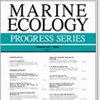Contrasted trends of intertidal macroalgal communities and sharp decline of canopy-forming species across two decades
IF 2.1
3区 环境科学与生态学
Q2 ECOLOGY
引用次数: 0
Abstract
ABSTRACT: Macroalgal communities are essential to coastal ecosystems, yet increasing effects of global change and anthropogenic pressures are leading to their global decline. Investigating the long-term dynamics of these communities across different localities appears crucial to better understand their responses to such pressures, as our knowledge of spatial heterogeneities in macroalgal trajectories remains elusive. To fill this gap, the community trajectory analysis framework provides a set of innovative multivariate metrics to characterize and quantitatively compare the temporal dynamics of different communities. Using long-term monitoring data (2004-2022), this method was applied to intertidal macroalgal communities across 10 locations distributed over more than 500 km of coastline in Brittany, France. Three distinct temporal dynamics were identified. High-shore communities exhibited minimal changes over time, while low-shore communities were characterized by a fluctuating understorey species composition but a general stability pattern. In contrast, the mid-shore community dominated by Ascophyllum nodosum underwent conspicuous changes in composition and structure. Further analysis of the latter community unveiled clear spatial patterns, with a significant deterioration of the structural state attributed to canopy loss in eastern Brittany, negatively impacting understorey species. This decline may ultimately lead to massive changes in coastal ecosystem functioning and services. This study emphasizes the importance of maintaining long-term ecological monitoring as well as the pertinence of temporal trajectories methods to identify and understand community changes at various spatial scales.潮间带大型藻类群落的对比趋势和形成冠层的物种在二十年间的急剧减少
摘要:大型藻类群落对沿岸生态系统至关重要,但全球变化和人为压力的影响越来越大,导致其在全球范围内衰退。调查这些群落在不同地区的长期动态似乎对更好地理解它们对这些压力的反应至关重要,因为我们对大型藻类轨迹的空间异质性仍然知之甚少。为了填补这一空白,群落轨迹分析框架提供了一套创新的多元指标,用于描述和定量比较不同群落的时间动态。利用长期监测数据(2004-2022 年),该方法被应用于法国布列塔尼 500 多公里海岸线上 10 个地点的潮间带大型藻类群落。研究发现了三种不同的时间动态。高岸群落随着时间的推移变化极小,而低岸群落的特点是底层物种组成起伏不定,但总体稳定。相比之下,以 Ascophyllum nodosum 为主的中岸群落在组成和结构上发生了明显的变化。对后一种群落的进一步分析揭示了清晰的空间模式,结构状态的显著恶化归因于布列塔尼东部树冠的消失,对底层物种产生了负面影响。这种衰退最终可能导致沿海生态系统的功能和服务发生巨大变化。这项研究强调了保持长期生态监测的重要性,以及用时间轨迹方法识别和了解不同空间尺度上群落变化的相关性。
本文章由计算机程序翻译,如有差异,请以英文原文为准。
求助全文
约1分钟内获得全文
求助全文
来源期刊

Marine Ecology Progress Series
环境科学-海洋学
CiteScore
5.30
自引率
8.00%
发文量
238
审稿时长
3 months
期刊介绍:
The leading journal in its field, MEPS covers all aspects of marine ecology, fundamental and applied. Topics covered include microbiology, botany, zoology, ecosystem research, biological oceanography, ecological aspects of fisheries and aquaculture, pollution, environmental protection, conservation, and resource management.
 求助内容:
求助内容: 应助结果提醒方式:
应助结果提醒方式:


